Abstract
A retrospective study of 3456 deliveries was conducted from the records of four Standardbred broodmare farms where mares were bred by artificial insemination and maintained under close veterinary supervision. Retained fetal membranes (RFM) were observed in 10.6% of the deliveries. Retained fetal membranes occurred more frequently (p < 0.05) after dystocia and in mares which had RFM the previous year. Retained fetal membranes after normal foaling had no significant effect on the reproductive performance (pregnancy rate, pregnancy loss rate, or foaling rate), nor on the general health of the mares, regardless of the duration of RFM (3 to 144 hours). Postfoaling laminitis was not observed. Oxytocin therapy of mares with RFM starting at two hours postpartum significantly reduced the incidence of RFM ≥ 8 hours. Mares with RFM which had received intrauterine antimicrobials between foaling and first breeding had a foaling rate similar to mares with RFM which had not received intrauterine therapy.
Full text
PDF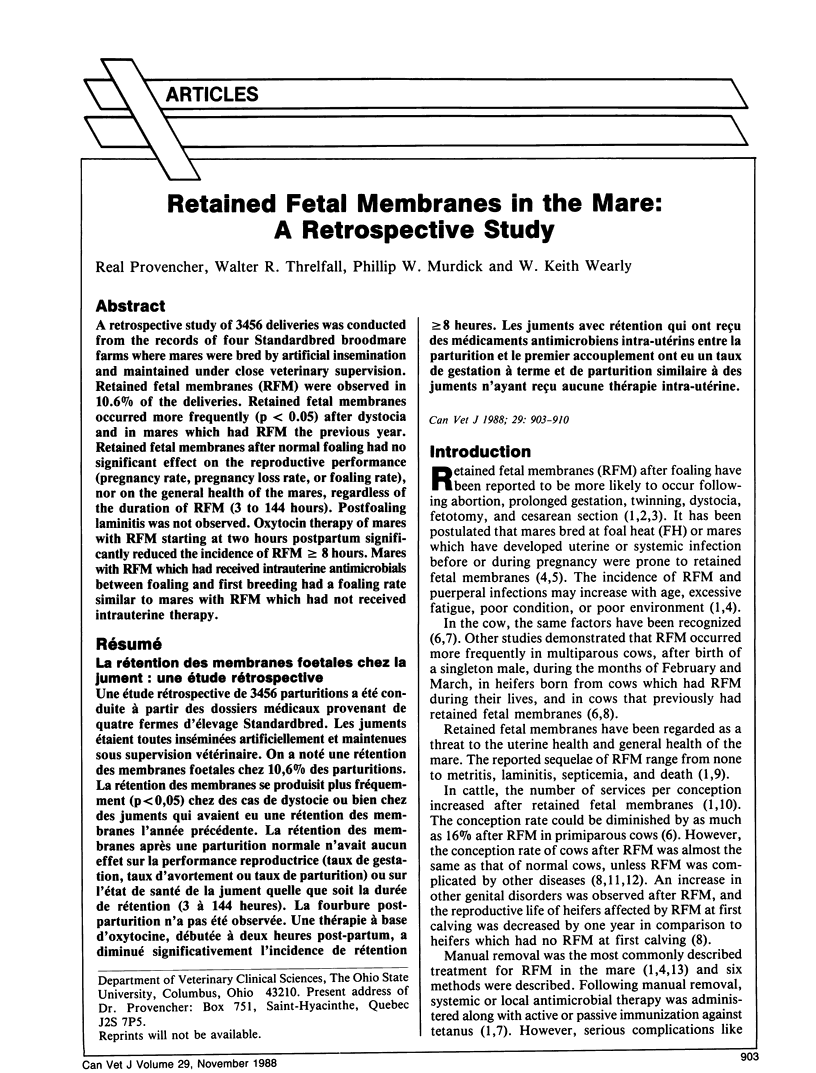
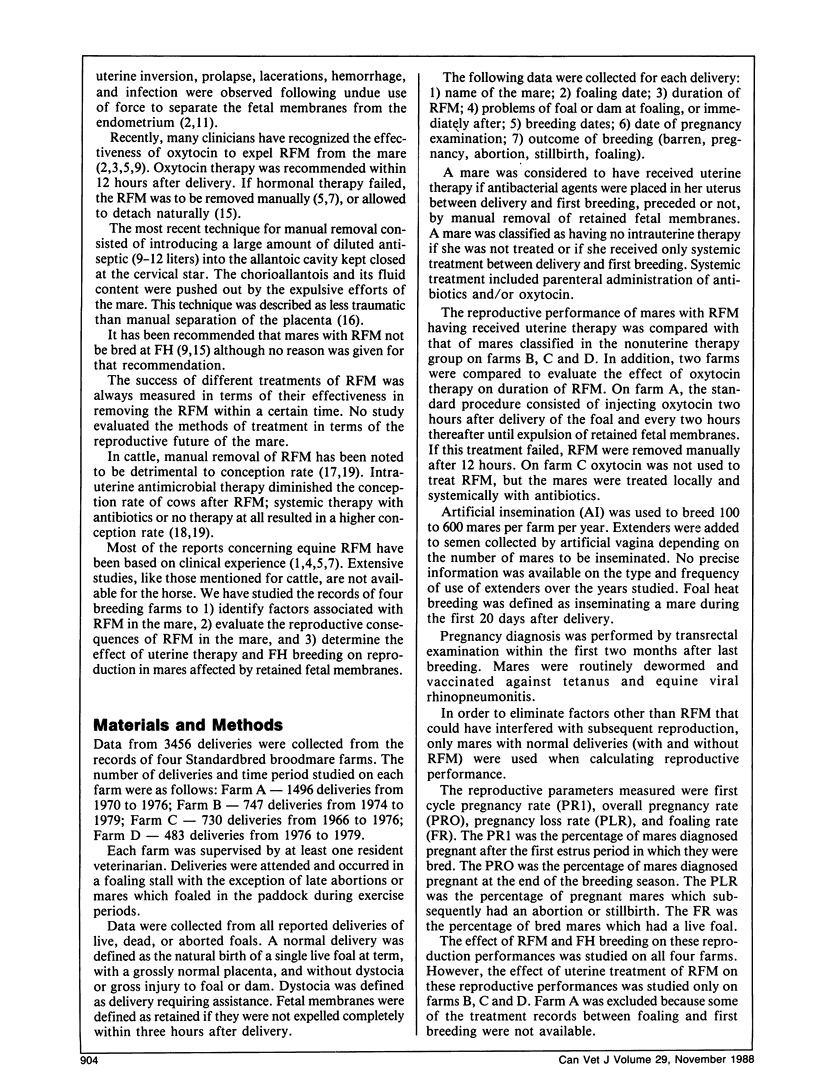
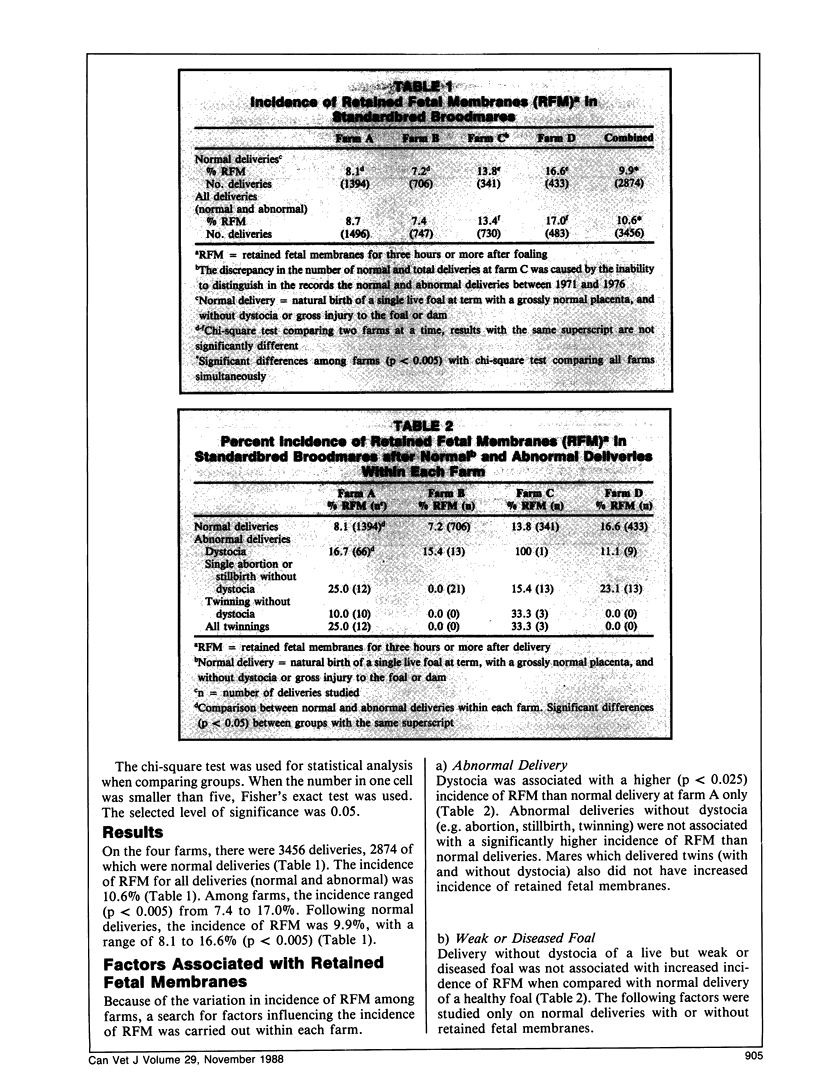
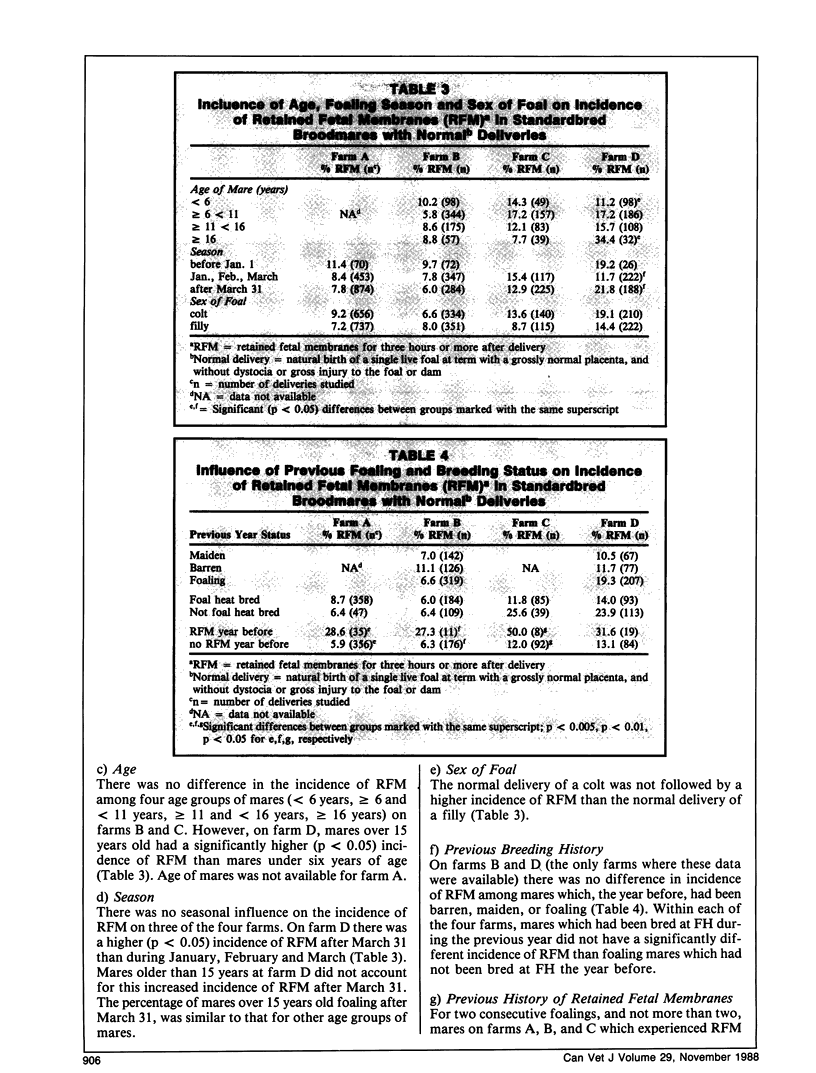

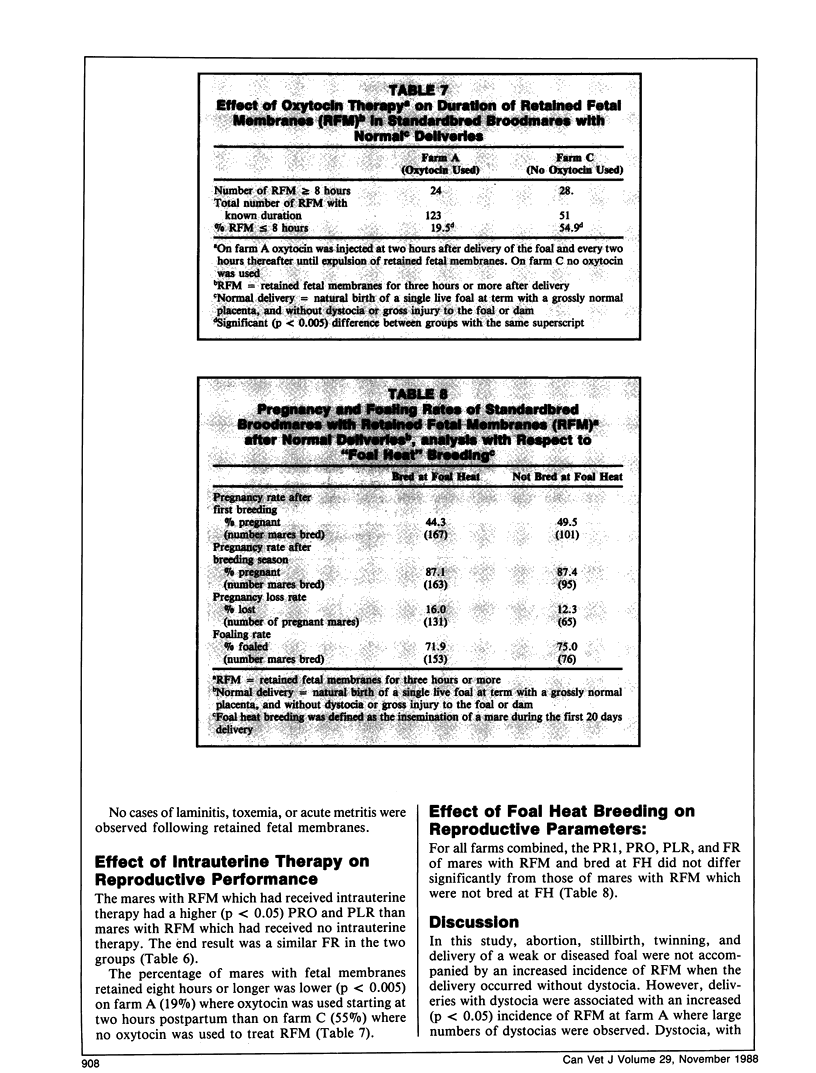
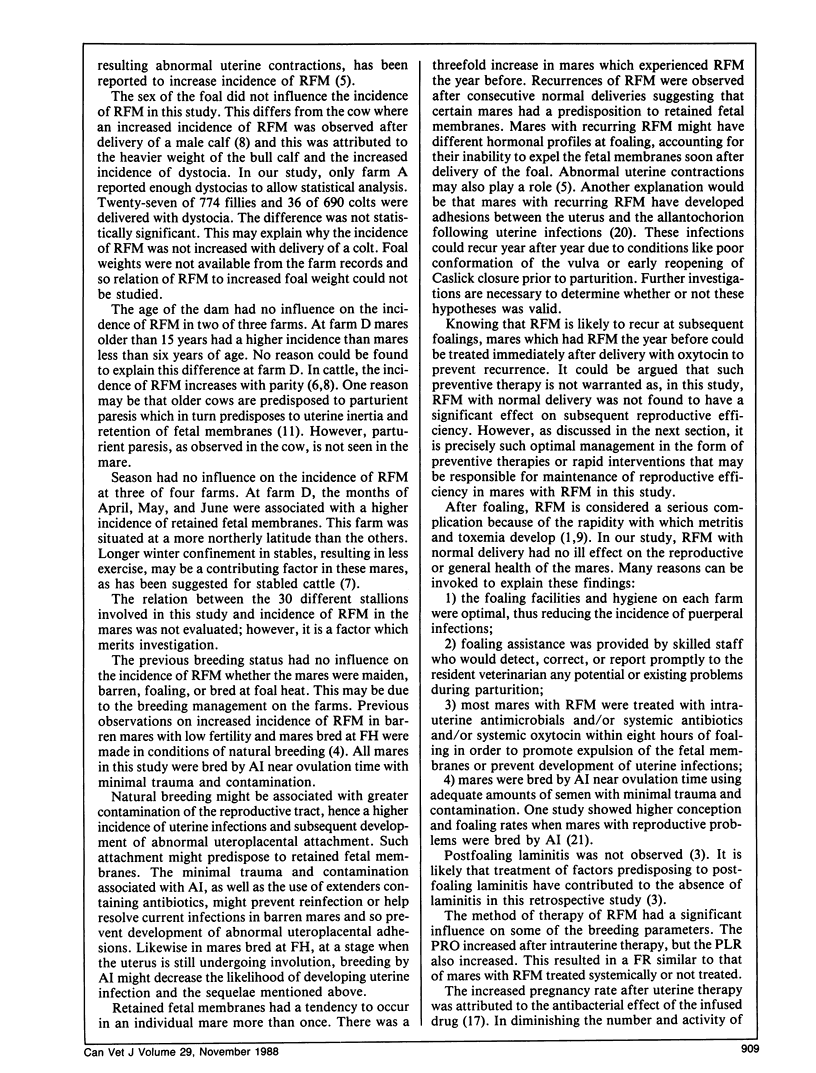
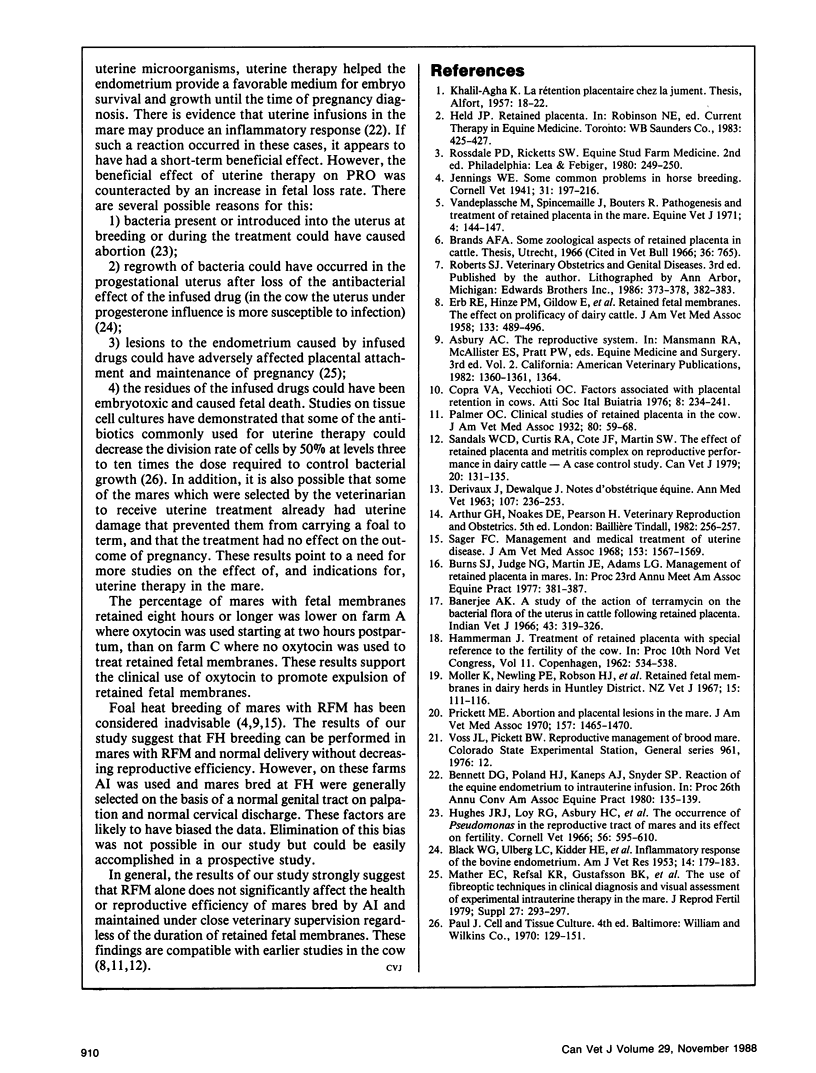
Selected References
These references are in PubMed. This may not be the complete list of references from this article.
- BLACK W. G., ULBERG L. C., KIDDER H. E., SIMON J., MCNUTT S. H., CASIDA L. E. Inflammatory response of the bovine endometrium. Am J Vet Res. 1953 Apr;14(51):179–183. [PubMed] [Google Scholar]
- Banerjee A. K. A study of the action of terramycin on the bacterial flora of the uterus in cattle following retained placenta. Indian Vet J. 1966 Apr;43(4):319–326. [PubMed] [Google Scholar]
- ERB R. E., HINZE P. M., GILDOW E. M., MORRISON R. A. Retained fetal membranes: the effect on prolificacy of dairy cattle. J Am Vet Med Assoc. 1958 Nov 15;133(10):489–496. [PubMed] [Google Scholar]
- Hughes J. P., Loy R. G., Asbury A. C., Burd H. E. The occurrence of Pseudomonas in the reproductive tract of mares and its effect on fertility. Cornell Vet. 1966 Oct;56(4):595–610. [PubMed] [Google Scholar]
- Mather E. C., Refsal K. R., Gustafsson B. K., Seguin B. E., Whitmore H. L. The use of fibre-optic techniques in clinical diagnosis and visual assessment of experimental intrauterine therapy in mares. J Reprod Fertil Suppl. 1979;(27):293–297. [PubMed] [Google Scholar]
- Moller K., Newling P. E., Robson H. J., Jansen G. J., Meursinge J. A., Cooper M. G. Retained foetal membranes in dairy herds in the Huntly district. N Z Vet J. 1967 Jul;15(7):111–116. doi: 10.1080/00480169.1967.33707. [DOI] [PubMed] [Google Scholar]
- Prickett M. E. Abortion and placental lesions in the mare. J Am Vet Med Assoc. 1970 Dec 1;157(11):1465–1470. [PubMed] [Google Scholar]
- Sandals W. C., Curtis R. A., Cote J. F., Martin S. W. The effect of retained placenta and metritis complex on reproductive performance in dairy cattle -- a case control study. Can Vet J. 1979 May;20(5):131–135. [PMC free article] [PubMed] [Google Scholar]
- Vandeplassche M., Spincemaille J., Bouters R. Aetiology, pathogenesis and treatment of retained placenta in the mare. Equine Vet J. 1971 Oct;3(4):144–147. doi: 10.1111/j.2042-3306.1971.tb04459.x. [DOI] [PubMed] [Google Scholar]


